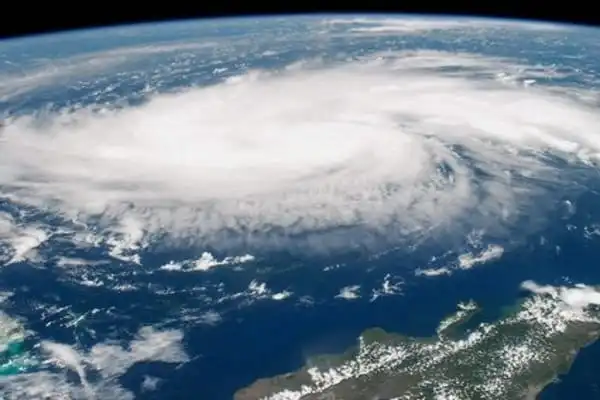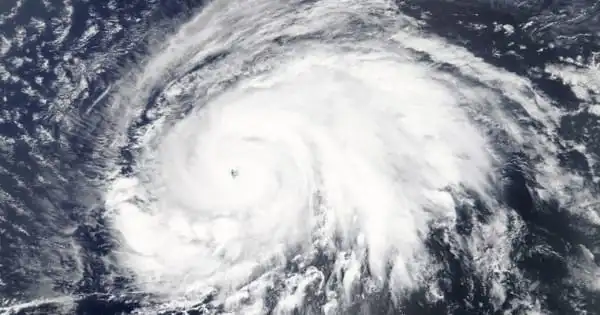While much is known about extreme weather events on land, little is known about those that occur in the water. A study conducted by ETH Zurich uses simulations to demonstrate for the first time that marine heatwaves and extremes with high acidity or low oxygen can coexist – with unpredictable repercussions for marine life.
Anthropogenic climate change is becoming more visible, most recently in Switzerland during the summer of 2021, which was highlighted by torrential rains and flooding. It has long been recognized that global warming is generating not only longer and more extreme heatwaves, but also more severe droughts, rainfall, and storms, depending on the region. Furthermore, these types of catastrophic weather events are increasingly occurring in tandem, aggravating each other.
However, little research has been conducted into how extreme events arise in the world’s waters. The relevance of maritime heatwaves and their influence on ecosystems was first highlighted in scientific studies in the early 2000s. A protracted maritime heatwave off Australia’s west coast in 2011 served as a wake-up call, destroying the species-rich kelp forests there. The “Blob,” as it is known, was a large bubble of warm water that stretched in the northeast Pacific Ocean and along the United States’ West Coast from Alaska to the equator from 2013 to 2015. Millions of sea birds, fish, and other species were killed.
Researchers from ETH Zurich, the University of Bern, and the University of Tasmania utilized a high-resolution ocean model to look at this unusual weather event in a new light. The multinational research, led by Nicolas Gruber, Professor of Environmental Physics at ETH Zurich, concluded that the mass die-off was most likely triggered by a combination of catastrophic occurrences that occurred at the same time.
When marine life is confronted with many stresses at the same time, it has difficulties acclimating. An additional oxygen deprivation can cause mortality for a fish species that is already living at the upper limit of its ideal temperature range.
Professor Nicolas Gruber
A combination of extreme events is particularly dangerous
The researchers utilized their model to reconstruct the Blob’s evolution across time, and in doing so, they examined the combination of temperature, acidity, and oxygen concentration in ocean water for the first time. According to their models, at the height of the heatwave in July 2015, extremes in acidity and low oxygen had spread widely throughout the afflicted region in the northeast Pacific.
The ETH researchers found that what happened along the coasts of Oregon, Washington, and British Columbia was a complex severe event, not just a heatwave. “When marine life is confronted with many stresses at the same time, it has difficulties acclimating,” explains Gruber. “An additional oxygen deprivation can cause mortality for a fish species that is already living at the upper limit of its ideal temperature range.”
As a result, in their study, which was just published in the journal Nature, the researchers urged the scientific community to pay closer attention to compound severe occurrences in the ocean. “To assess the dangers of these kind of catastrophes, we urgently need to research the chain of different environmental conditions that contribute to such extremes more closely – not just in local places, but also at the global level,” Gruber adds.

Global distribution analysed for the first time
This study’s authors have already taken a first step in this approach. In addition to the Blob, they utilized a global climate model to study where and how frequently extreme occurrences occur and how severe they are, categorizing them as heatwaves and circumstances with abnormally high acidity and low oxygen.
The researchers simulated extreme occurrences from 1861 to 2020 and contrasted the current state to pre-industrial eras to highlight the influence of climate change. The findings speak for themselves: the number of hot days on the ocean surface each year has grown tenfold, from roughly 4 to 40. The number of days with abnormally low oxygen levels in the ocean bottoms has grown fivefold.
The issue is significantly worse when it comes to acidity extremes. In comparison to pre-industrial times, what has now become nearly a constant extreme situation. “This illustrates how far climate change has already progressed in the ocean,” says Thomas Frölicher, co-author of the study and Professor at the University of Bern.
The researchers also indicate on a world map which ocean locations experience the most violent extreme events, both at the ocean’s surface and 200 metres beneath it. As the study’s authors point out, the spatial resolution of these occurrences within the water column is essential since it limits the ability of afflicted marine organisms to flee.
Huge knowledge gaps
The researchers cannot examine the ecological repercussions of extreme events in detail, but one thing is clear: as compared to slow-moving climate change, the influence of extreme events on ocean life is generally stronger. Many types of adaptation techniques are rendered unfeasible due to the quick occurrence of environmental changes.
Current model simulations can only to a limited extent recreate the reaction of these ecosystems to extremes; they cannot yet adequately represent the complexity of biological and ecological processes. “For example, our models’ ability to distinguish between distinct kinds of algae and zooplankton remains extremely limited,” explains Meike Vogt, a senior researcher in Gruber’s group. However, this distinction is significant since various species differ substantially in their ability to withstand extremes.
“From Swiss woods, we know that beech trees are less drought-tolerant than, say, pines,” Gruber explains. In contrast, considerably too little is now understood about marine ecosystems. “We have a limited grasp of the structure and function of ecosystems in different ocean regions. Only with this basis will we be able to assess the impact of climate change and extreme weather events “According to Vogt.
But one thing is certain: as climate change continues, extreme occurrences will become more often, both individually and in conjunction with others. Better data and comprehensive research would pave the path for more appropriate ocean-protection action. “We could, for example, institute a fishing prohibition to preserve regions damaged by extreme occurrences, much like there are now international protected zones on the high seas,” Gruber adds. In the case of the Blob, this has already been done. However, a fishing ban alone will not enough; additional actions are urgently required, according to the ETH expert. “Time is running out!”





